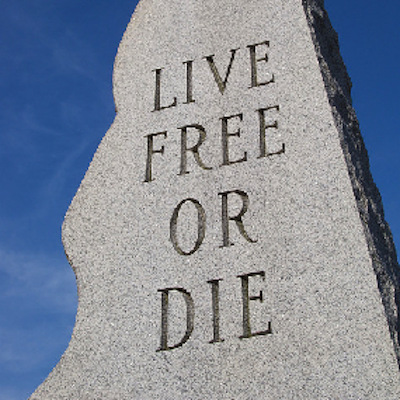Perilli: Rhode Island Needs a Living Wage
Wednesday, January 01, 2014
What's it take to get a good raise around here?
I have to give our General Assembly credit: they have, unlike Congress, taken pains to increase the state minimum wage by a small amount for the past two years. Today it rises to $8 an hour. Nearly ten thousand Rhode Islanders paid at the state's lowest legal rate are getting an important boost, one that for many families can be the difference between getting by and making painful cost-cutting decisions.
However the fact remains that as our workers have become more productive, the minimum wage has fallen behind. In real terms, both the Rhode Island and federal minimum wages are down from their high water marks in the 1960s. But our neighbors to the north are starting to buck this trend: A bill up for debate in the Massachusetts General Court would raise their statewide minimum wage to $11 by 2016.
GET THE LATEST BREAKING NEWS HERE -- SIGN UP FOR GOLOCAL FREE DAILY EBLASTHow will Rhode Island respond? For all the talk of being competitive with our neighbors, minimum wage parity comes up surprisingly little. Let's have a New Year's resolution here in the Ocean State. No Rhode Islander––in fact, no one, period––should have to be a poor full-time worker. We need a double-digit minimum wage.
Living on the Edge
As of today, the day laws across the country change to mark the new year, Rhode Island's minimum wage has officially ticked up 25 cents to an even $8 an hour. The federal minimum wage, the bottom floor for the entire nation, remains $7.25 an hour, where it has stayed since 2009.
Today is also the first day of the bold new Medicaid expansion under the Affordable Care Act. The federal healthcare program for the poor now covers anyone at or below 133 percent of the poverty line. As we'll see, this is a crucial weight on the scale when we debate raising the minimum wage.
Now let's take a family of four, two parents and two children, where both parents make the federal minimum wage. According to the Census Bureau, the poverty line for a family of four is $23,550 a year. This means that if their income is below $31,322, they are automatically eligible for Medicaid. But can they reach this threshold? If both parents work 40 hours a week for 52 weeks a year, making $7.25 an hour, the family will earn $30,160 in a year, missing the mark by over a thousand dollars.
This is completely backwards.
And this is only if their state offers them the absolute minimum of Medicaid coverage. In Rhode Island, Medicaid for families is covered for up to 181 percent of the poverty line for parents and 250 percent for infants and children, meaning that families could earn even more but still not break away from being eligible for welfare.
Of course, this doesn't even account for what having two parents working full time on subsistence wages means for children. Delayed language acquisition and permanent academic disadvantages are but two of a long list of problems.
America––nay, the Earth itself––makes a basic promise to laborers. Work hard, and you will be able to reap the benefits of your toil and enjoy the fruits of self-sufficiency.
Unfortunately, this doesn't seem to apply anymore.
This odd post-industrial problem, the fact that families can work full time and still be poor, is the most compelling reason to raise the minimum wage. If we in Rhode Island want to pay more than just lip service to fighting poverty, we must give our lowest-earning workers a significant raise.
Tried and Untrue
At this point, opponents of the minimum wage will roll out all the old cannons. Raising the minimum wage will destroy jobs and hurt businesses. Teenagers looking for job experience will be forced out of work! If the minimum wage debate ever comes to a head in the General Assembly this year, I guarantee that we will hear these lines repeated ad nauseam.
The right-leaning Rhode Island Center for Freedom and Prosperity loves to put out studies showing just how many jobs the Ocean State will lose from raising the minimum wage. One of their latest screeds argues that raising Rhode Island's minimum wage to $10.10 an hour would cost the state over three thousand jobs.
This is interesting, considering that similar studies do not show this effect at all. The most widely cited one, conducted by economists Alan Krueger and David Card, observed fast food restaurants in New Jersey and Pennsylvania. New Jersey had just raised its minimum wage, while Pennsylvania had not. The study found no evidence that raising the minimum wage had destroyed jobs.
In truth, economists are still deeply divided over the minimum wage. There is no conclusive evidence that raising the minimum wage kills jobs, nor any proof that it doesn't.
However, far more convincing is the evidence that increasing the minimum wage raises the earnings of working and middle class households. The Economic Policy Institute found that if the federal minimum wage were raised to $10.10 an hour, more than half of income gains would be seen by families making less than $40,000 a year. My original point stands: If we want to help Rhode Island's middle class, raising the minimum wage is the sensible thing to do.
A Different Point of View
If you're a conservative and still unconvinced about the minimum wage, then stick around. There's another way to look at this issue.
Consider the aforementioned family of four, which had two parents working minimum wage jobs but still had to take Medicaid money to get by. The benefits they get from the government are, in effect, additional wages which allow them to escape poverty. This means that you––the taxpayer––are basically paying part of their salary without getting anything in return.
No matter if you're conservative, moderate or liberal, this fact should be infuriating. Businesses large and small are getting the public to pay their employees while taking all revenue from the labor for themselves!
Raising the minimum wage would privatize this problem. Companies will be forced to pay their workers a wage that puts them out of the reach of state and federal entitlement programs, meaning that the poorest workers get a raise, and taxpayers pay less to support them.
So this new year, let's make some commitments. Let's have no more of Walmart holding charity drives for its own employees. Let's have no more of McDonald's tellings its workers to get a second job.
We can do better than this. Let's give our workers a wage they can live on.
John Perilli is a native of Cumberland, RI and a junior at Brown University. He is the Communications Director for the Brown University Democrats. The opinions presented in this article do not necessarily represent those of the organizations of which John Perilli is a member.
Related Slideshow: Pew Research: New England Employment Figures From FY2007 to FY2013
While unemployment figures receive more media attention, the employment rate is a preferred index for many economists because it provides a sharper picture of changes in the labor market. The unemployment rate, for example, fails to count workers who stopped looking for a job. By focusing on 25- to 54-year-olds, trends are less distorted by demographic effects such as older and younger workers’ choices regarding retirement or full-time education.
Below are the employment rates in FY2007 and FY2013 for New England states as referenced by the Pew Charitable Trust's "Fiscal 50: State Trends and Analysis" Report, ranked from best to worst.
Related Articles
- Russell Moore: Warwick Puts Politics Before Students
- NEW: Minimum Wage Hike Will Cost 200 Teen Jobs, Group Says
- Blais: Partisan Politics or Thoughtful Party-Spirited Proponents?
- Side of the Rhode: Who’s Hot and Who’s Not in RI Politics?
- John Perilli: Bipartisanship Is Ugly
- Side of the Rhode: Who’s Hot and Who’s Not in RI Politics?
- John Perilli: Brain Drain Should Scare Us
- Rob Horowitz: RI’s Minimum Wage Boost Good News For Families
- John Perilli: Don’t Axe the Lieutenant Governor
- RI State Report: Minimum Wage, Woonsocket + Cutting School Days
- John Perilli: Of Ducks, Debates and Dehumanization
- Carol Anne Costa: Where Would JFK Fit Into Modern Politics?
- Arthur Schaper: Politics: A Matter of the Heart
- Side of the Rhode: Who’s Hot and Who’s Not in RI Politics?
- Arthur Schaper: The Politics of 38 Studios: Junk
- NEW: Lawmaker Hopes to raise Minimum Wage
















